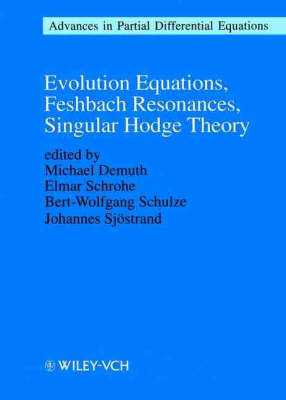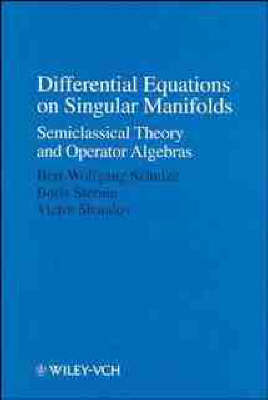Mathematical Topics S.
3 total works
v. 16
Evolution Equations, Feshbach Resonances, Singular Hodge Theory
by M. Demuth and etc.
Published 24 March 1999
Evolution equations describe many processes in science and engineering. The first three contributions to this volume address parabolic evolutionary problems: first there is a treatment, via asymptotic solutions, of transitions with highly singular interaction at th start, say by distribution of even hyperfunction data. An article follows on solutions to time dependent singular problems in non-cylindrical domains by local operator methods. In the third paper, the theory of the asymptotic Laplace transform is developed and applied to semigroups generated by operators with large growth of the resolvement. The next contribution addresses spectral properties of systems of pseudodifferential operators when the characteristic variety has a conical intersection. For various semiclassical regimes, Bohr-Sommerfeld quantization rules and first order exponential asymptotics of the resonance widths are provided. In the following article, the limiting absorption principle is proven for certain self-adjoint operators. Applications include Hamiltonians with magnetic fields, Dirac Hamiltonians, and propagation of waves in inhomogeneous media.
The final topic is the Hodge theory on manifolds with edges. The authors introduce a concept of elliptic complexes, prove a Hodge decomposition theorem, and study the asymptotics of harmonic forms.
The final topic is the Hodge theory on manifolds with edges. The authors introduce a concept of elliptic complexes, prove a Hodge decomposition theorem, and study the asymptotics of harmonic forms.
Spectral Theory, Microlocal Analysis, Singular Manifolds
by M. Demuth and etc.
Published 4 February 1998
The spectral theory of differential operators is a challenging subject with deep connections to many branches of mathematics and mathematical physics. It is a central issue in this volume. The first contribution addresses domain perturbations for generalized Schroedinger operators and the influence of the capacity on spectral data. There follows an article discussing the minimal smoothness assumptions on the domain under which the asymptotics of the counting function for the eigenvalues of elliptic boundary value problems can be determined. Systems of h-pseudo-differential operators on the half-line are studied in the next paper. The results concern existence and distribution of resonances for various semi-classical regimes. Three further articles are devoted to the regularity and symptotics of solutions to partial differential equations on singular manifolds. A very efficient tool is the combination of suitable operator algebras and pseudo-differential calculi with sufficiently rich symbolic structures. One paper considers the case of manifolds with non-compact ends, another the case of higher cuspidal singularities. A final contribution treats degenerate hyperbolic equations.
Differential Equations on Singular Manifolds
by Bert-Wolfgang Schulze and etc.
Published 17 December 1998
In the book, new methods in the theory of differential equations on manifolds with singularities are presented. The semiclassical theory in quantum mechanics is employed, adapted to operators that are degenerate in a typical way. The degeneracies may be induced by singular geometries, e.g., conical or cuspidal ones. A large variety of non-standard degenerate operators are also discussed.
The semiclassical approach yields new results and unexpected effects, also in classical situations. For instance, full asymptotic expansions for cuspidal singularities are constructed, and nonstationary problems on singular manifolds are treated. Moreover, finiteness theorems are obtained by using operator algebra methods in a unified framework. Finally the method of characteristics for general elliptic equations on manifolds with singularities is developed in the book.
The semiclassical approach yields new results and unexpected effects, also in classical situations. For instance, full asymptotic expansions for cuspidal singularities are constructed, and nonstationary problems on singular manifolds are treated. Moreover, finiteness theorems are obtained by using operator algebra methods in a unified framework. Finally the method of characteristics for general elliptic equations on manifolds with singularities is developed in the book.


